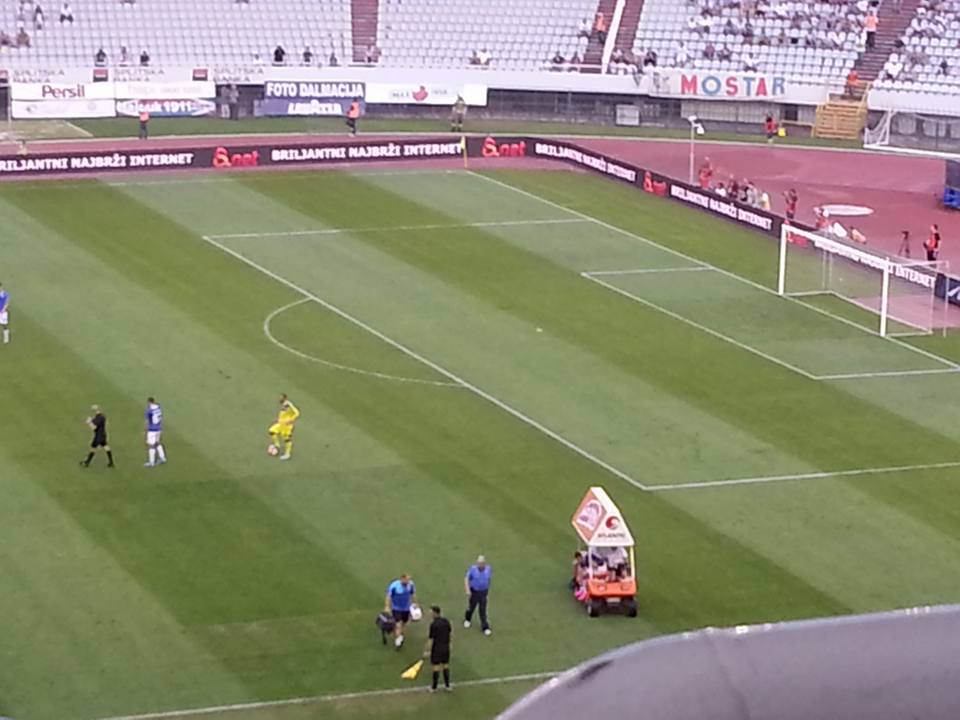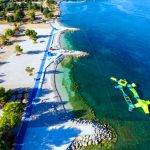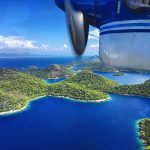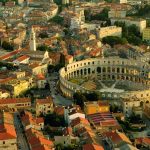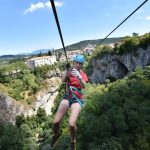Easily the finest undiscovered gem of Istria, Labin is located in the Eastern part of the peninsula. The town used to be known for coal mines, but these days it’s a cool tourism destination, and a great place to live!
- Welcome!
- How to get to Labin and get around
- 5 things not to miss
- Where to stay?
- Where to eat?
- Top 3 day trips from Labin
- 3 things you didn’t know about Labin
Welcome!
Labin is the biggest town in otherwise not-so-populated and not-so-popular eastern Istria. In the past, the town was known for its coal mines. Nowadays, all the mines have been closed, and there are no more miners. The community is turning more and more towards tourism – but is far from being overwhelmed by it. Its old town, sitting on top of a hill, is among the most beautiful ones on the peninsula. Although it’s not located by the sea, and exactly because of that, Labin has a stunning view of Kvarner bay. But, as you will learn from this article, Labin is much more than your typical charming Istrian place. Get ready for modernist architecture, quaint walking trails, and lots of art.
How to get to Labin and get around
Plane
There are several options if you plan to fly close to Labin. Pula Airport is the closest, the drive from it is going to be under an hour even during the high tourist season. Rijeka Airport is somewhat further, as it is on the island of Krk, on the opposite side of Rijeka from Labin. Count on that drive being closer to 2 hours, and potentially more in the highs season. Trieste’s airport is also an option, as it’s under 150 km away. You should keep in mind that you need to cross two borders to get from there to Labin.
Road
Car and bus are basically the only ways to reach Labin. The town is not located on the Istrian motorway system, also known as the Istrian Y. However, there are good roads connecting it to the rest of Istria. If coming from Zagreb or Rijeka, best to leave the “Y” right after passing through tunnel Učka at exit Vranje. Take the road 500 to Vozilići, then road 66 to Labin. There exists a much more scenic way to Labin if coming from this direction. It is a bit longer: take road 66 from Matulji exit on road E751, which runs along the Adriatic coast. If coming from Slovenia/Italy or western Istria, take the Y to Rogovići, then road 64 to Vozilići, then road 66 to Labin. If coming from Pula, the best way is road 66.
Bus connections are somewhat poor, but there are bus lines to and from Zagreb, Rijeka and Pula. Best to contact your nearest bus station, as proper info on bus lines in Croatia is often non-existent, incomplete or unreliable on the Internet.
Labin is a small place, so most of the attractions are accessible by foot. However, it helps to have a car or at least a bike at your disposal for any trips.
Looking for a fast, reliable and trouble-free transfer to or from Labin? Contact TC transfer partner Adriatic Transfers for your one-stop solution.
5 things not to miss in Labin
Art & Heritage
For a town of little over 10 thousand people, Labin has a respectable number of art projects and events. To begin with, there is Labin Art Express (LAE), contemporary art association established in 1991. It’s based in multimedia centre Lamparna, located in the old coal mine buildings. Its main aim is to preserve the abandoned mines by constructing a whole underground city beneath the ground. There should be bars, restaurants, galleries, concert halls, and the like, with its own government, literally underground. The project is not finished, but you can check out other ongoing LAE’s projects on their website. Another project of interest is the Labin Art Republic, held throughout July and August. During the Art Republic, the old town gets turned into a stage for concerts and plays, accompanied by exhibitions by local artists. Check out their Facebook page for more info.
Still, the finest art project in Labin is easily the sculpture park Dubrova. It started in 1969, as the fruit of Mediteranski kiparski simpozij (Mediterranean Symposium of Sculpture), and still going. The project involves guest sculptors, mostly Croatian, but also from the entire world. They come to Labin every year and are given stone blocks brought from an Istrian quarry to chisel. The resulting works, about 80 of them, are on display in the 40-hectares park, located just outside of town.
Narodni muzej Labin (People’s Museum of Labin) is dedicated mostly to the town’s mining history and Labinska republika (see below). It includes a replica of the mining shaft.
Labinski krafi
Labin boasts a unique local delicacy, labinski krafi – nothing similar is found in Istria or Croatia. This pasta is similar to ravioli, but with a special filling made of cheese, vanilla, lemon zest, sugar, eggs, and rum-soaked raisins. Traditionally, it was eaten on special occasions and can work as both sweet and savory dish. That means that you can pair it with meat stew, or simply sprinkle it with some toasted breadcrumbs. It is relatively unknown even in Istria so Labin is almost the only place to try it and is available in most local restaurants.
Walks and trekking
If you want to enjoy one of the most spectacular views in Istria, just climb to fortica, the highest part of the old town. Strolling from the old town to the charming local graveyard makes for another pleasant walk. A special treat is Sentona’s trail, named after Roman goddess of travellers. It leads from the old town to the nearby coastal town of Rabac, passing next to several streams and waterfalls. It isn’t nicknamed “Little Plitvice” for nothing! If you want to explore the inland, take the trail of Saint Barbara. It will take you to the nearby town of Raša, past an abandoned, but preserved coal mine shaft.
Several serious races take place around Labin: the biggest Croatian Ultra trail race “100 miles of Istria” starts here. In October, a series of races called “Valamar Trail” happens around Labin and Rabac, and the runners often say those are the most beautiful races around.
Modernist architecture
Old Labin is your typical medieval Istrian town. The new town – called Podlabin or, in Italian, Pozzo Littorio – is a fine example of modernist architecture. The Italian fascist regime, which ruled Istria with an iron fist until their capitulation, had an undeniable knack for architecture. Wanting to create perfect settlements for workers and managers of Labin’s coal mines, Mussolini’s government brought in top-notch architects to bring their ideals to life. New Labin was inaugurated in the early 40s, inspired by antique Roman castrums. The idea was to have perfectly ordered streets organized around a central square, and simple, austere houses with an unmistakable Mediterranean touch. Rising above the town is the most recognizable local landmark, the šoht – local term for a headframe – which was recently refurbished after rusting for years, and now serves as a gathering point for the locals.
For more remains of failed regimes, visit the already mentioned town of Raša, located only 5 kilometers away from Labin, and accesible by foot (the aforementioned saint Barbara’s trail), another attempt at an utopian miners’ town, built a couple of years before Labin. Although the place lost much of it past splendor, it still makes for a worthwhile visit. The attractions are the church of saint Barbara, the patron saint of miners, built to resemble an upturned coal wagon, and the miners’ museum.
The beaches
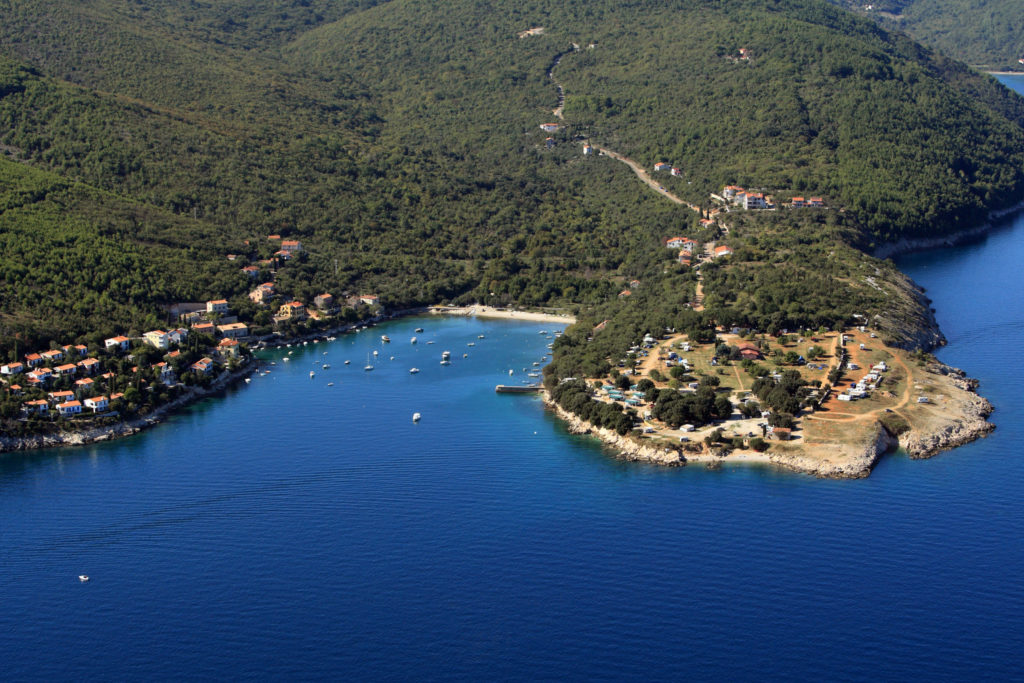
Rabac, a town lying on the sea next to Labin, is the main resort place on the eastern coast of Istria (if not counting Opatija), but if you want to keep away from the crowded places, check the beaches the locals visit, such as Ravni. It requires a car – or, if you are willing to sweat a bit, a bike – ride on narrow and curvy roads. Another option is Prtlog, centuries ago the port of Labin, now a charming bay. If you’re willing to hike for a couple of hours, take the Terra Magica trail from Rabac. For a more bizarre swimming experience, drive to village Koromačno, where a cement-works towers over crystal clear waters.
Where to stay in Labin
As most visitors to the area choose Rabac for a stay, Labin is not crowded like other Istrian tourist hotspots, but still offers comfy accomodation. The most renowned hotel is Peteani, located on the road leading up to the old town in a fancily refurbished old building. Its restaurant is also recommendable, and the terrace is a place to be. Other great options are hotel Loggia and Terra Residence bed & breakfast, both located in the old town. Loggia’s forte is its lounge bar, offering a variety of cocktails, whereas Terra Residence’s highlight is its charming back yard.
Where to eat in Labin
For old school local food, such as pastas and stews, try Velo Kafe, located in the very centre of old town. For elaborate food, both local and international, alongside a spectacular view on Kvarner bay, go to restaurant Kvarner, also in the old town. If pizza is your choice, the most creative place in town, making true Neapolitan pizza, is pizzeria Rumore, located right next to Kvarner. Also recommendable are the restaurant of the aforementioned hotel Peteani, offering seasonal local groceries prepared with a modern twist, and Due Fratelli, run by a family of fishermen, offering seafood, grilled meat, and truffle-based dishes. Make sure to try fresh scampi caught in Kvarner bay, as they count among the best in the world.
Top 3 day trips from Labin
Učka
Hiking lovers should not miss the opportunity to climb Istria’s highest mountain, which separates it from the rest of Croatia. Most people just go through the Učka tunnel, but going over it on foot or by car is a special treat. Učka is a nature park, and is well worth the half-hour drive from Labin. The trails are easily accessible by car, and there is plenty to explore.
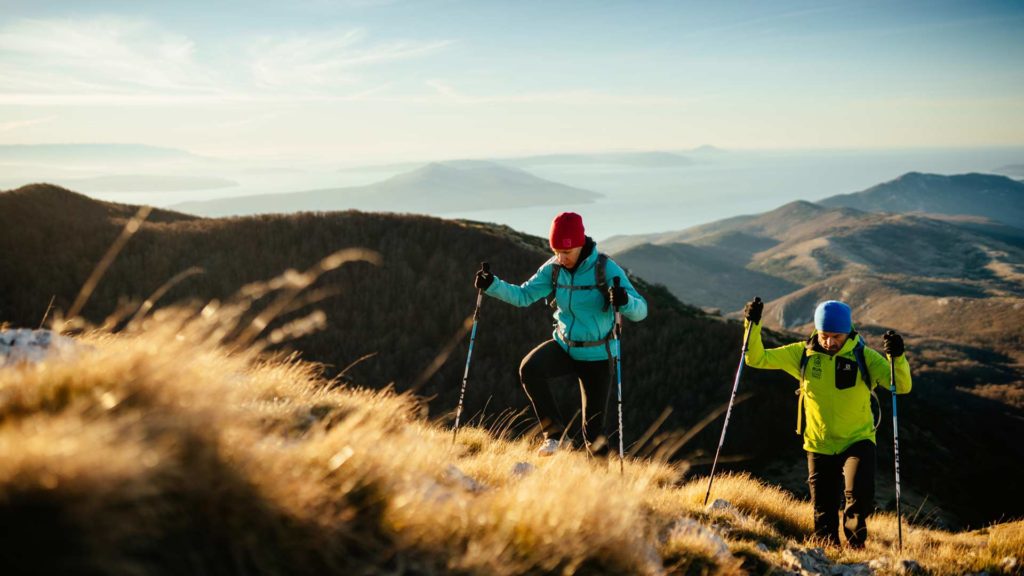
Cres
This trip also requires a car – less than half an hour away from Labin is Brestova, a ferry port from which you will land on Croatia’s biggest island in 20 minutes. Cres can take days to explore, but you can also see a lot in one day! Make sure you visit Lubenice (and maybe the beach below it, if you’re in good shape), go to Beli to learn more about griffon vultures. Just keep in mind that visiting the Cres town will definitely be worth it. Most of the centre of the town dates back centuries, and you can feel that in the atmosphere in the town.
Ćićarija
Učka might be the highest mountain, but Ćićarija is the most remote and hence the wildest part of Istria. Located at the very north of the peninsula, right next to Učka, this mountanious plateau got its name from its inhabitants Ćići, who were Romanian-speaking shepherds. Their language is still spoken by a handful of people in remote villages, but the area is almost uninhabited – which only adds to its charm. If you like visiting villages where it seems that time has stopped – such as Lanišće Račja Vas, Brest or Slum – this is a place to be. There are also numerous hiking trails, the ones leading to Žbevnica peak being the most popular ones. Also worth checking out is konoba Lovac in Jelovice, offering superb local food.
3 things you didn’t know about Labin
The Republic of Labin
Labin often gets credits as the place where the first anti-fascist uprising in history took place. After World War One and the dissolution of the Austro-Hungarian Empire, of which Istria was part, the area was annexed by Italy. The government, with the help of fascists squads, started to Italianise the ethnically mixed peninsula, provoking resistance from oppressed minorities. In this atmosphere, the decision of owners of coal mines in the Labin area to abolish the celebration of Candlemass in 1921- a holiday very important to the miners, as it symbolized light – stirred tensions among the workers.
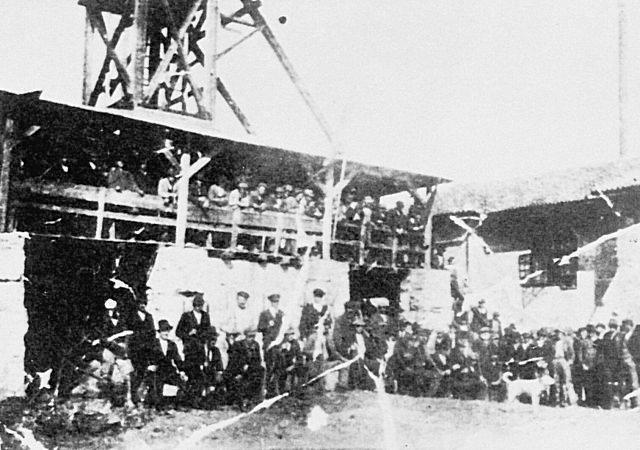
These escalated when the fascists attacked and beat up miners’ leader, which drove the workers – of all ethnicities – to organize a general strike, and occupy the mines, attempting to run the production themselves. This prompted a response from the Italian authorities, who quickly overpowered the poorly organized miners. The “republic” lasted for one month only but left a proud legacy that lives to this day.
Wine rebellion
Long before they rose up against fascists, the people of Labin rebelled against – high prices of wine. Centuries ago, when Istria was ruled by Venetian Republic local wine producers were obliged to hand over a portion of their wine to the local podestat, representative of Venice, who would sell it to locals. In 1768, podestat’s wife decided to increase the price of wine, which led to an uprising, with the armed locals gathering in front of her house, eventually forcing her to reduce the price.
Matija Vlačić Ilirik
The most important Croatian protestant theologian, Matija Vlačić Ilirik, was born in Labin. Living in the turbulent 16th century, he advocated for a radical version of Lutheranism, often coming into conflict even with his fellow reformers. His version of Christianity, however, never caught on among his fellow Croats, but he is still appreciated as an important scholar. You can visit his birth place, a small palace in the old town, with an exhibiton dedicated to his life and works.
More information
Official webpage of the town of Labin: http://www.labin.hr
Webpage of the tourist board of Labin and Rabac: https://www.rabac-labin.com/en
To follow the latest news from Labin, check out the dedicated TCN page.

